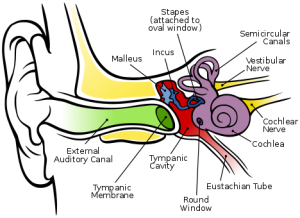During Thanksgiving, I stayed with my friends in New York City. We ate a lot and ate at late night, slept late every night and did not go to gym at all. We were all saying that we gained weight a lot during these nine days. So for one night, I asked them whether they go to gym in college quite often. They told me that if they have a friend who will go with them, it increases the chance for them to go to gym. If there isn’t any friend who is going with them, then they don’t have the incentive to go to the gym because going alone is boring. And people always get lazy sometimes. For me, I go to gym by myself usually and I have time that I feel lazy as well. After listening to what they said, I wonder what really motivates people to go to the gym. Can people be more active if provided fancy gym? Is it because people feel lonely and they want somebody to go with them? Is gym a perfect place to kill time with? Or are they not motivated enough to build better muscle or lose weight? Do they really want to go to gym for themselves or is it because everyone goes to gym and they feel like they should as well? With all of these questions, I find a project which is related to motivation methods to promote physical activity.
The Newcastle exercise project conducted a randomized controlled trial that 523 adults aged from 40-64 who were distributed to four intervention groups: a brief (1 interview) or intensive (6 interviews) with or without financial incentives (vouchers), and a control group. It designed four phrases which were baseline assessment, post-intervention, 12 weeks after baseline, and repeat one year after baseline. Within this study, the null hypothesis is that “changes in self-reported physical activity at follow up would be the same in the intervention and control groups” (BMJ). As the results come out, four interventions combined group improved significantly compared to the control group. But within intervention groups, there is no significant effect between vouchers or bigger than (>1) interview. More participants who had increased physical activity scores were given both multiple interviews and vouchers. The data showed that it was 39% higher than in the control group. So does this result suggest that people will have more incentives to go to the gym if they are awarded? Vigorous activity had much bigger improvements than the four intervention groups combined. On the one year base, “Increases in physical activity reported at 12 weeks by participants in the intervention groups were not maintained at one year, regardless of the intensity of intervention, only the increase in vigorous activity in the intervention groups was close to statistical significance. The data were consistent with small positive or negative effects of intervention groups compared with controls” (BMJ). Since the data were consistent, it indicates that there is a relationship between intervention and physical activities. But I still wonder what specifically motivates people to do physical activity?
The second research conducted several studies. The first study is about a simple sign increasing the number of people walking up instead of using an escalator, though the number declined after sign was removed, which indicates of using very low cost intervention shows that very low cost intervention can increase physical activity in a specific behavior setting. The second study is more complicated that creating better environmental improvements “The changes appeared to improve the fitness of personnel on the intervention base, but limitations in the design and measurement strategy limit confidence in the conclusions” (Sciencedirect). The third case study took place in Finland which is a program that encourages people to walk to work. Given showers and changing rooms with government support, changes occur slowly during intervention but only 7% reported that their increase their physical activity. The fourth study happened in Belfast, United Kingdom, that within 7 years, Belfast becomes one of the best-served cities for sports and activity centers. Most participation comes from young adults, some from aged people. And this study shows that environmental interventions do affect people’s participation for physical activity. (Picture is about a model proposed for implementing environmental interventions).
From the second studies above, I come up with several questions. These studies were done within certain countries, so I wonder if different countries will have different effect to the result. The third case study happened in Finland, and the fourth one happened in United Kingdom. What if the places changed? Will the result remains the same or be different? More effective intervention or it totally not works? In the fourth study that took place in United Kingdom, what is the percentage of men and women’s participation for physical activity? Does sex play a role in determining increasing physical activity? Could it exist third variables that influence the result? The first study use very low cost and creates improvements, while the later three studies provide more complicated and modern gyms or infrastructures show effects as well. But after all, implementing environmental interventions still has challenges. Model design still needs evidence to prove the effectiveness.
















